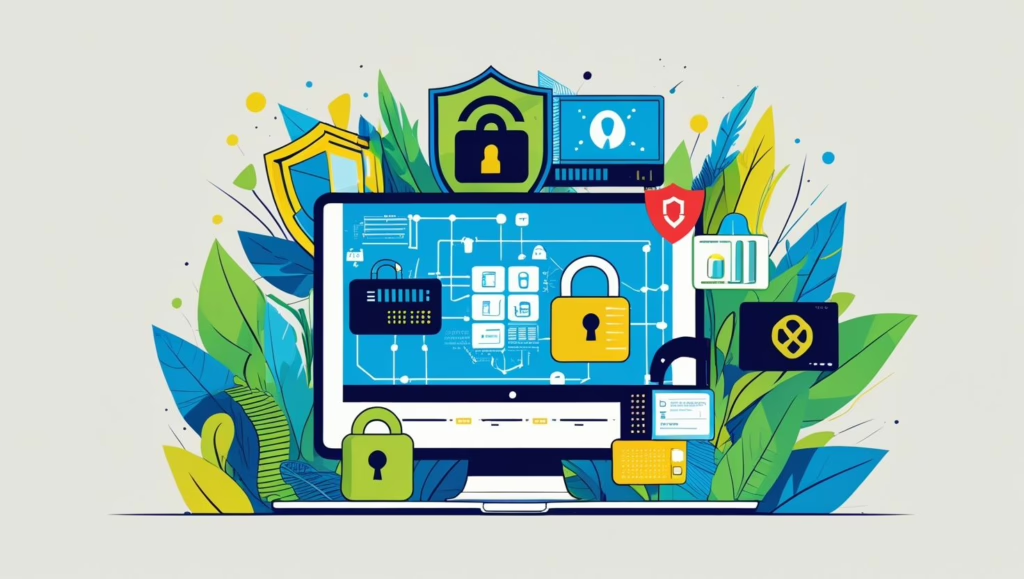
Are You Ready for the Next Cyber Attack?
Small and medium-sized businesses (SMBs) are a favorite target for cybercriminals. In fact, 43% of cyberattacks target SMBs, yet only 14% are prepared (Verizon Data Breach Report). Ignoring cybersecurity can lead to devastating financial and reputational losses.
Understanding the Cyber Threat Landscape
Cybercriminals pose as legitimate businesses to steal sensitive data.Before protecting your business, you need to understand the threats you’re facing. Cyberattacks come in many forms, but here are the most common ones affecting SMBs:
1. Phishing Attacks – The #1 SMB Threat
- Cybercriminals pose as legitimate businesses to steal sensitive data.
- Example: A fake invoice email tricks an employee into making a payment.
2. Ransomware Attacks – Holding Your Business Hostage
- Hackers encrypt your business data and demand payment for its release.
- Fact: The average ransom payment in 2023 was $740,144, but paying doesn’t guarantee data recovery (Sophos Report).
3. Insider Threats – Danger Within
- Employees, whether accidentally or maliciously, compromise security.
- Example: A staff member downloads an infected file, unknowingly giving hackers access.
4. Supply Chain Attacks – Attacking Through Your Partners
- Hackers infiltrate your system by exploiting vulnerabilities in vendors you work with.
- Example: Target’s 2013 breach, affecting 40 million customers, was caused by a third-party HVAC vendor.
5 Steps to Secure Your SMB

1. Enforce Strong Passwords & Multi-Factor Authentication (MFA)
- Require passwords to be 12+ characters with a mix of letters, numbers, and symbols.
- Use MFA: A second verification step (like a mobile app) reduces risks by 99%.
- Tool: Use password managers like Bitwarden.
2. Keep Software & Systems Updated
- Regularly update all operating systems, software, and apps to fix security vulnerabilities.
- Enable automatic updates to reduce human error.
- Fact: 60% of SMB breaches happen due to unpatched vulnerabilities (Ponemon Institute).
3. Train Your Employees to Spot Cyber Threats
- Conduct quarterly security awareness training.
- Teach staff how to recognize phishing attempts and suspicious links.
- Test Your Team: Use simulated phishing attacks (e.g., KnowBe4) to see who falls for fake emails.
4. Secure Your Data with Regular Backups
- Use the 3-2-1 Rule: Keep 3 copies of your data, on 2 different types of storage, with 1 offsite backup.
- Cloud Backup Tools: Acronis, Backblaze, Google Drive for Business.
5. Invest in Cybersecurity Tools
- Firewall & Antivirus: Install enterprise-grade security tools like Cisco Umbrella or Bitdefender.
- Monitor Network Activity: Tools like Zabbix or Datadog help detect anomalies.
Case Study: How a Small Business Avoided a $50,000 Ransom
Meet Lisa, the owner of a boutique e-commerce store. One day, her team received an email with an invoice from a “vendor.” Without verifying, an employee clicked a link, downloading ransomware. All customer data was locked.
Fortunately, Lisa had daily backups in place. Instead of paying the $50,000 ransom, her IT team restored everything within hours. Lesson: Backups are your last line of defense!
Final Thoughts: Cybersecurity is Ongoing, Not One-Time
Securing your SMB from cyber threats isn’t a one-time fix—it requires ongoing vigilance and strategy. Implement these measures today to protect your business from costly cyber incidents.
